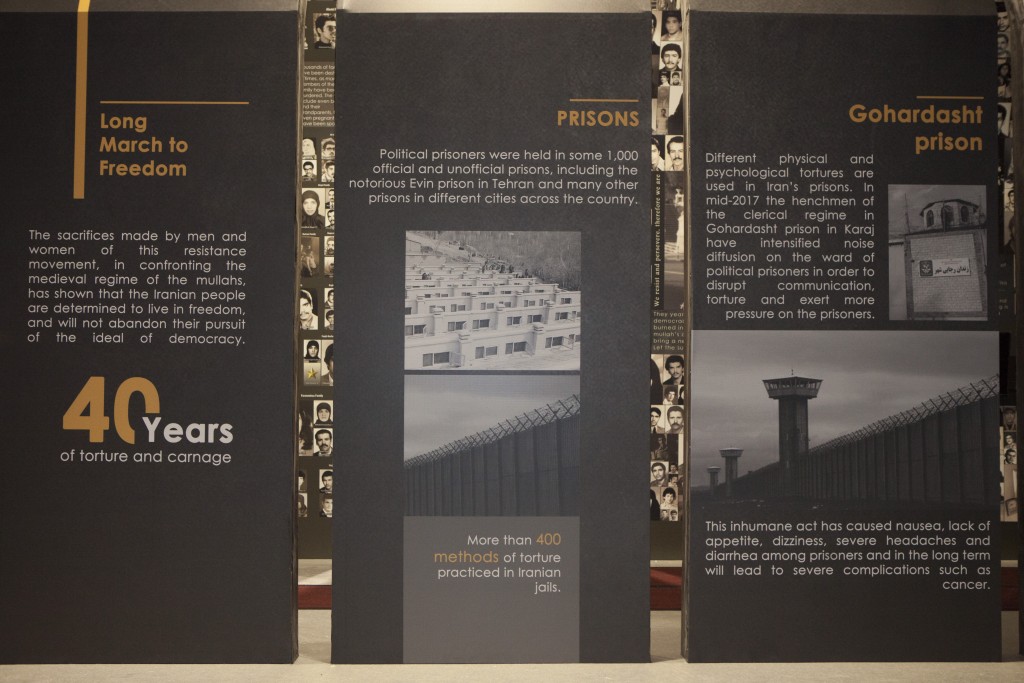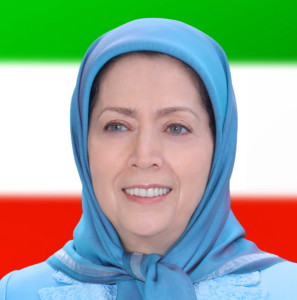Perseverance of Iran’s Political Prisoners Epitomizes Unyielding Defiance Against Both Shah and Clerical Dictatorships

In their steadfastness, political prisoners seek the regime’s overthrow and freedom of their enchained people
The Iranian Judiciary sentenced three women prisoners and supporters of the People’s Mojahedin Organization of Iran (PMOI/MEK) to a total of 35 years in prison on February 17th. Forough Taghipour and Marzieh Farsi each received 15-year sentences, while Zahra Safaei was sentenced to 5 years.
The religious fascism ruling Iran attempts to suppress protests and undermine the significant role women play through tactics such as arrests, torture, executions, and long-term imprisonment.
Since the beginning of his rule, the regime’s Supreme Leader Ali Khamenei has executed numerous political prisoners and members of ethnic groups, including Baluchis, Kurds, and Arabs in Iran. He has also ordered the killing of thousands of young men and women who participated in street protests.
Despite the torture and abuse inflicted upon political prisoners, as well as the brutal sexual assaults, particularly prevalent under Khamenei’s rule, the resilience of political prisoners in Iran remains unbroken. Their dignity persists in the hearts and minds of the Iranian people.
If Khamenei and his regime were truly stable and strong, they wouldn’t fear political prisoners. Indeed, they should fear the constant influx of thousands of rebellious youths and brave members of the Resistance Units into their prisons.
They should fear the 30,000 young individuals who endured unimaginable abuse and sexual assault following the nationwide protests in 2022, only to emerge even more determined.
They should indeed fear the political prisoners currently resisting in Evin, Qezel Hesar, Gohardasht, Qarchak, Dieselabad, Sepidar, Adelabad, Vakilabad, Urmia, Sanandaj, and Zahedan prisons. These prisons are filled with individuals who fearlessly pursue freedom and resist oppression.
They embody the steadfastness of the PMOI and the Liberation Army in their resistance.
Both Khomeini and Khamenei, along with their predecessors over the last century, harbor an intense fear of political prisoners who symbolize the resilience and indomitability of the people. Their primary method of maintaining power is through torture, killings, and the sadistic actions of their brutal agents.
From Sarpas Mokhtar under Reza Shah to Parviz Sabeti under Mohammad Reza Shah, and Assadollah Lajevardi under Khomeini, these figures have employed extreme measures to suppress dissent and maintain control.
A glance at the situation of political prisoners in the past century
According to the renowned book on Iran’s contemporary history, “The Past is the Light of the Future,” Reza Shah was responsible for the deaths of 24,000 people during his reign. By establishing Qasr prison, he laid the foundation for a system of torture and execution, particularly targeting political prisoners, at the beginning of the last century.
When Mossadeq assumed office as prime minister, he visited Qasr prison and was deeply affected by the sight of hundreds of political prisoners. He remarked, “This place has been the slaughterhouse of many free thinkers.” He then raised his concerns in parliament, stating, “There are 400-500 individuals in this central prison… They are in a deplorable state, and you should truly be ashamed.”
Mohammad Reza Shah escalated the torture and execution of political prisoners into a horrifying and systematic practice, carried out by the notorious SAVAK, particularly following the 1953 coup against Mossadeq.
Under Khomeini’s reign, tyranny reached its zenith, marked by the massacre in the 1980s, particularly the mass killing of 30,000 political prisoners. This was perceived as retaliation against all those who had contributed to the downfall of the dictatorship and the oppressive ruling class.
The significant difference now is the nation’s uprising and the lessons learned by the Iranian Resistance from the painful experiences of contemporary history, spanning from the Constitutional Movement to the Anti-Monarchist Revolution. They have mobilized a nationwide movement and organized resistance.
Iranian regime fears role of political prisoners
Today, the courageous men and women who resist in Khamenei’s prisons have been detained for over two decades for their support or affiliation with the PMOI. They are deprived of even the most basic prisoner rights. For years, they have not been granted a single day of furlough.
The honorable women and men who are currently in chains, their sentences extended each year, have committed no crime other than contacting the PMOI, providing them with financial support, or seeking justice for massacre victims. Their cases involve no other charges.
From the perspective of the prisoners, they are detained. So, what is the reason behind the clerical regime’s fear of these defiant political prisoners?
The regime understands the prisoner’s defiance, coupled with the enduring resistance of a movement spanning over four decades, holds a profound significance. This movement’s sole aim is the overthrow of the regime and the liberation of the oppressed people. For this reason, the regime does not tolerate even the slightest inclination to support the movement.
The most severe crimes, punishments, tortures, incarcerations, and executions are inflicted upon supporters of the PMOI.
They are labeled as “Mohareb” because outside the prison, the resistance persists, and the PMOI organization continues to stand its ground.
The regime fears political prisoners because it understands that these resilient individuals are supported by the people of Iran, the protesters, the Resistance Units, and the PMOI freedom fighters. They are supported by every Iranian yearning for freedom who seeks to eradicate the system of hanging, torture, and repression from Iran.
These prisoners are supported by the very Resistance that strives for a free Iran, free from tyranny, religious oppression, and sex slavery. They aim for a nation where the death penalty is abolished, and where democracy, equality, and justice prevail.
These prisoners are supported by a leader, Massoud Rajavi, who has spearheaded the strongest resistance for over five decades. A resistance that has caused the Shah, the mullahs, their remnants, and their allies to cry out in frustration.
The ruling religious dictatorship has no way out and no solution but to be overthrown by the Army of Freedom, led by this resistance and the Resistance Units.
The tortures, savage and intolerable harassments, and the river of blood that has been shed from the bodies of the Iranian people in the prisons, have configured an inevitable fate ensuring that the uprising of the Iranian people will undoubtedly break the prison doors and bury the religious dictatorship under the rubble of its own prisons.
Let us recall the words of Massoud Rajavi at Tehran University just a few days after his release from the prisons of Shah’s SAVAK on January 20, 1979. He delivered the glad tidings of the inevitable overthrow of dictatorship and the victory of our people.
He said, “How is it possible to kill the sun? How is it possible to stop the wind from blowing, the rain from pouring? How can one prevent spring from arriving, and the tulips from blooming?
And how is it possible to forever enchain a nation? No, never. Why? Because this is the will of God and the will of our people. It is the promise of all prophets and the conviction of all the world’s great revolutionaries, who proclaim that the people will triumph, and the future is bright.”
The inevitable triumph of the Iranian people’s democratic revolution heralds a bright future for a free Iran, where democracy, equality, and justice prevail.

